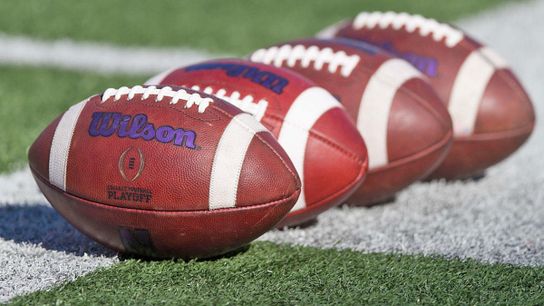Any one of the items in “normal” times for the NCAA could qualify as a rather seismic issue.
All three essentially at the same time?
Well, that’s the front-stove issues facing college athletics’ governing body -- specifically as it pertains to the 25-man/85-man scholarship roster limits in the Football Bowl Subdivision; free agency, aka the Transfer Portal; and, Name, Image & Likeness governance – of some sort, though college football coaches and leaders as well NCAA representatives aren’t remotely sure what that entails.
There is, now, a bit of a nexus between two of those issues most fully dominating college football programs: NIL and the Portal.
“The thing we all love, NIL,” said one official. “It’s one thing else with transfers, too. (Student-athletes) are asking for a transfer NIL (deal/opportunities), and signing an FSA (Federal Student Aid). But an athlete can sign six or seven FSAs; it binds the kid to the school, not the school to the kid.”
Now in the works, one of several elements of focus after meetings last week and those upcoming from the NCAA Transformation Committee and its Board of Governors, is a proposal to limit student-athletes to signing just one FSA agreement.
“To make things more clear-cut,” said someone with knowledge, “if a kid signs an FSA, you’re going to end up with the kid.”
Sources indicated coaches expressed that “we want it to go both ways,” noting that some players have signed multiple FSA documents and then left schools empty-handed for the largest NIL deal. This proposal would mean that once a student-athlete signs a single FSA, he or she is bound to the institution represented in that initial financial aid agreement.
Also, as noted, the NCAA’s Board of Governors “have told the investigative group at the NCAA, we want you to investigate these deals to see if they are pay-for-play or inducements. Which, honestly, we all know they are. What happens with that? We don’t know. The Board of Governors said they’d like to make it retroactive if it happens. It’s going to be a mess, if it happens.”
The collectives have “some things that might be happening you have to be aware of,” said a source. “Contracts, what are you doing in relation to what should be done?”
According to multiple people with direct knowledge, “it’s a charge to the NCAA” to investigate, because it’s been discussed within the past week by the organization’s Director of Enforcement.
While no source indicates anything likely can be legally done “retroactively” in terms of impeding a prospect’s ability to play collegiately if he or she has accepted an NIL arrangement based on a stipulation that the athlete is receiving the pact hinging on signing with a particular school, the “pay-for-play or inducement” scenario above, it is an element of NIL that seemingly almost all parties want to see gain legislation.
Multiple Power 5 assistant coaches, including from different Atlantic Coast Conference and Southeastern Conference programs, in recent weeks have expressed to FootballScoop a desire to see that element change; nearly a half-dozen personnel and off-the-field executives from P5 programs, four within the SEC, express similar desires.
One P5 coach last week told FootballScoop, “Yeah, it’s great; you get these players. But what happens when you pay $6 or $8 million to get a quarterback and he doesn’t start? Or he’s throwing interceptions? How long before that booster wants to know why the coaches can’t get this kid playing well after they’ve spent all that money?”
As a pair of personnel leaders from SEC programs said, a sentiment echoed as well by a Group of 5 representative, “There’s a real concern about who’s going to be running your program, with the way collectives are operating in recruiting right now. Is the coaching staff and personnel department deciding who to recruit? Or is it the collectives?”
The NCAA’s potential probe into the infant stages of NIL likewise could examine booster involvement beyond the “marketing agreements” for student-athletes. Has a booster provided other impermissible benefits, from free lodging to transportation, in form of private jet or otherwise? These are the elements at the center of the NCAA’s burgeoning investigative efforts, urged by the Board of Governors which contains representatives from ACC, Big Ten, Big 12, Pac-12, SEC and myriad other conferences, including the Ohio Valley among the sport’s Football Championship Subdivision level.
Central to potential tweaking to the Transfer Portal is the potential to add a pair of “transfer windows.” It’s an element numerous coaches said they broadly support because of roster management issues, and it likewise ties into the potential adjustment to the 25-man/85-man roster.
They want a “transfer window that coincides with the recruiting calendar, so they can know who’s on the roster.”
Potential date ranges include the last Sunday of November through to the first early signing period in mid-December; the other window is positioned to possibly be from April 15 to May 1.
An interesting leg of that potential piece of change: coaches strongly prefer an ending date in early May prior to the end of school and when kids return home, because student-athletes “have got people chirping in their ear, go to the Portal, do this, get a better deal somewhere else.”
The goal is that by the time an athlete leaves campus, he or she is either committed to returning to that school or already entered into the Portal; declaring a transfer after the spring deadline would result in ineligibility for the coming season, barring a successful waiver appeal.
